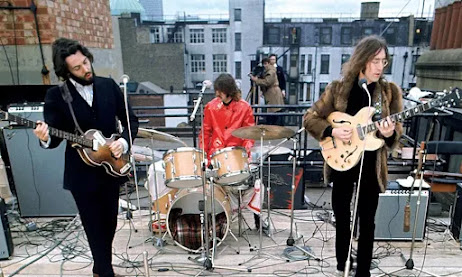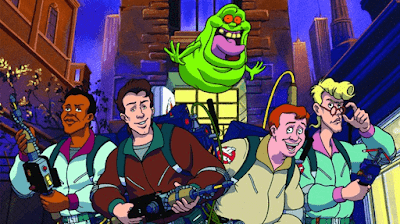As usual this year, we’ve got a season full of prestige films, but, for obvious reasons, fewer folks will be going to the theaters to see them. However, I’m not going to let that stop me as this is the first in a series of posts that will feature reviews of a roster of current movies. These critiques are shorter than the ones I regularly post in this forum, but some are not as this is called Film Babble Blog for a reason. So let’s start with the latest from one of my favorite filmmakers, Paul Thomas Anderson:
LICORICE PIZZA (Dir. Paul Thomas Anderson, 2021)
Paul Thomas Anderson’s ninth film is his most charming effort since PUNCH DRUNK LOVE. It’s also a brighter, less cynical, and more colorful work than Anderson’s most recent output that finds its filmmaker in a appealingly sentimental mode. Harking back to a sun-drenched 1973, the film lays out the relationship between an aging child actor (the chubby, but extremely confident Cooper Hoffman, son of Philip Seymour Hoffman), and a snarky photographer’s assistant (Alana Haim, who I bet we’ll see a lot more of). Cooper’s Gary Valentine (great name) is 15, while Haim’s Alana Kane is 25, but that doesn’t deter the sparks in their interactions, even if both of them date others at times.
The most Wes Anderson-ish bit involves Bradley Cooper as an unhinged, and potentially violent producer/former hairdresser Jon Peters, who at the time was Barbara Streisand boyfriend. This sequence feels like it would fit right into BOOGIE NIGHTS. Another fun highlight posits Sean Penn as actor Jack Holden (read: William Holden), who jumps a motorcycle over a fire pit at the Van Nuys Golf Course. Although it's a glorified cameo, it’s Penn’s best, and most conscious free acting in ages. Filled with era representing rock tunes (how could it not be?), LICORICE PIZZA is a delight of a witty, and romantic period piece. For some folks, it may be too slow, and lengthy, but those are a few things I actually think the film has going for it as one can luxuriate in experience.
HOUSE OF GUCCI (Dir. Ridley Scott, 2021)
When it comes to the rich famous people in turmoil genre, one can understandably believe that acclaimed filmmaker Ridley Scott took a look back at his 2017 drama, ALL THE MONEY IN THE WORLD, and thought ‘I want to make another one of these.’ So he set his sights on the Gucci empire, a global sensation that manufactured expensive handbags among other extravagant accessories. At the heart of this rise-and-fall film is a love story between Maurizio Gucci (Adam Driver), and Patrizia Reggiani (Lady Gaga), which begins with a meet cute at a lavish costume party. Before long, the couple marries despite the objection of Maurizo’s father (Jeremy Irons). On the other side of the Gucci dynasty is Maurizo’s uncle, Aldo (Al Pacino), and his ne’er-do-well son Paolo (a completely unrecognizable Jared Leto).
Affairs, forgeries, and eventually murder make up this seemingly elegant yet shameful tale that on the surface is as convincing as the imitation Gucci merchandise that sends Patrizi into a tizzy, but underneath is yet another formulaic morality myth. Working from a palets of off-white imagery, Scott has fashioned an elegantly watchable work, but I doubt it will hold up as very memorable in the years ahead. But the reason to see it now is undoubtedly its top notch cast. The classy yet tabloid prone Lady Gaga yet again proves herself to be an spot-on actress; Driver excels as the aloof, and nonchalant tycoon of legend; Pacino puts in one of his most invested performances in ages, and Leto, who I really didn’t know was playing Paolo until the end credits, shines through his prosthetics convincingly; and Salma Hayek has a juicy role as a jaded psychic. This ensemble keeps HOUSE OF GUCCI from being just opulent eye candy, but just barely.
MAYOR PETE (Dir. Jesse Moss, 2021)
Early on in this documentary, Presidential candidate Pete Buttigieg describes himself as “a Maltese American, left-handed Episcopalian, gay war veteran, mayor millennial.” But of these traits, predictably the one that keeps coming up is Buttigieg’s homosexuality. We see him field variations of questions like “As the first openly homosexual presidential candidate, do you think that’s a plus or a minus towards your efforts to the Oval Office?” Our young wannabe nominee stresses how his orientation doesn’t affect his qualifications for the presidency, but he stumbles, albeit eloquently on matters of race. This is why he has lunch with Reverend Al Sharpton at one point. Buttigieg comes across as a likably sincere, calm (as more than one possible supporter notes), and driven and aspiring Commander in Chief. However, despite some amusing, and inspirational moments, this film is an all too typical portrait of an idealistic politician. Its good intentions can’t obscure that it’s a glorified infomercial that doesn’t have much impact after the fact.
More later...



































